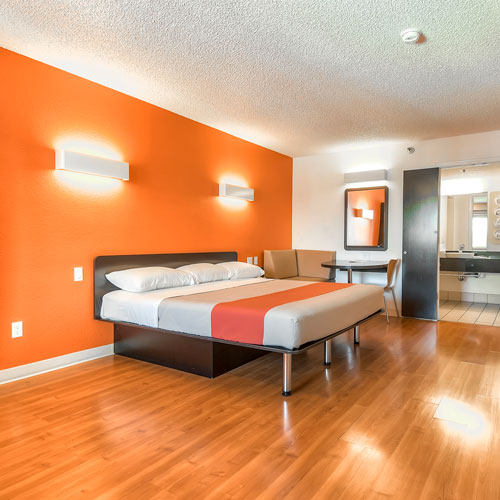Increasingly, banking clients are using their digital devices to simplify their financial lives. As a result, the banking industry is changing. Online and mobile banking have made banking services available at home and on the go, and the proliferation of ATMs and point-of-sale options have reduced the need for in-branch interactions. While these developments won’t eliminate the need for physical locations, they do portend changes for the future of branch designs. “Does it make sense to have a 3,000-square-foot branch when you could meet the customer’s needs with one much smaller?” asks Frank Cotilla, senior vice president and director of facilities and network management for Sun National Bank, which serves customers at more than 50 locations in New Jersey, New York, and Pennsylvania.

When Cotilla joined Sun National Bank in 2009, the business was looking for ways to “right-size” its portfolio of branches. To that end, it worked with architecture firm Environetics to develop a branch prototype that could serve as a model for future locations. The bank took the initial conceptual idea and further refined it with the active participation of both internal stakeholders and targeted customer focus groups. “While the process of designing anything new requires a mix of both science and art, we have our eye toward fulfilling the current, evolving, and future needs and expectations of the markets we serve,” Cotilla says. “Consequently, our branch-distribution channel and specific designs will need to reflect a flexibility to adapt to our clients’ changing needs and preferences.”
This is also why Sun National Bank is following a “hub-and-spoke” model for its branch-network designs—to respond to changing consumer demographics and overall banking patterns. The hub tends to be a traditional branch prototype, roughly 2,500–3,500 square feet; the spokes would represent a number of smaller branches of 1,500 and 400 square feet. “I call it the bank-in-a-box concept,” Cotilla says, “because we can right-size the prototype from 3,500 square feet—as we did with our first prototype branches in Glendora, [New Jersey], and Northfield, [New Jersey]—to 1,500 square feet like the bank recently completed in Glassboro, [New Jersey], near Rowan University, to even 400 square feet, as we plan to do with branches in future locations. It’s a truly scalable solution.”

The most important part of implementing the hub-and-spoke model, Cotilla says, is finding the right strategic locations that are the right size. Banks previously required a large amount of square footage and stand-alone locations. Now, with self-service technology, banks can afford to rethink the physical footprint needed to effectively sell products and service customers. As Sun National Bank explores current leases as well as expansion opportunities, it is continuing to test the hub-and-spoke model with prototypes rolled out in a single county in New Jersey. The company believes that this model will increase efficiency, visibility, and convenience for customers.
There’s an amount of uncertainty that’s par for the course when you have a job such as Cotilla’s, however, so as the primary real estate executive overseeing Sun National Bank’s 40-plus locations across three states, he personally drives approximately 40,000 miles a year to keep as close an eye as he can on ongoing projects. The bank’s offices are spread out, with the northernmost ones in New York City and Bloomfield, New Jersey, and the southernmost one, more than 225 miles away, in Cape May, New Jersey.
On-site management is critical to ensure that the bank’s vendors—landscapers, snow removers, janitors, and contractors hired for capital projects—are doing what they’re contractually required to. It also gives Cotilla the opportunity to proactively identify problems such as roof leaks or other normal wear and tear before they become urgent reactionary events. “It’s good,” he says, “to keep my finger on the pulse.”



